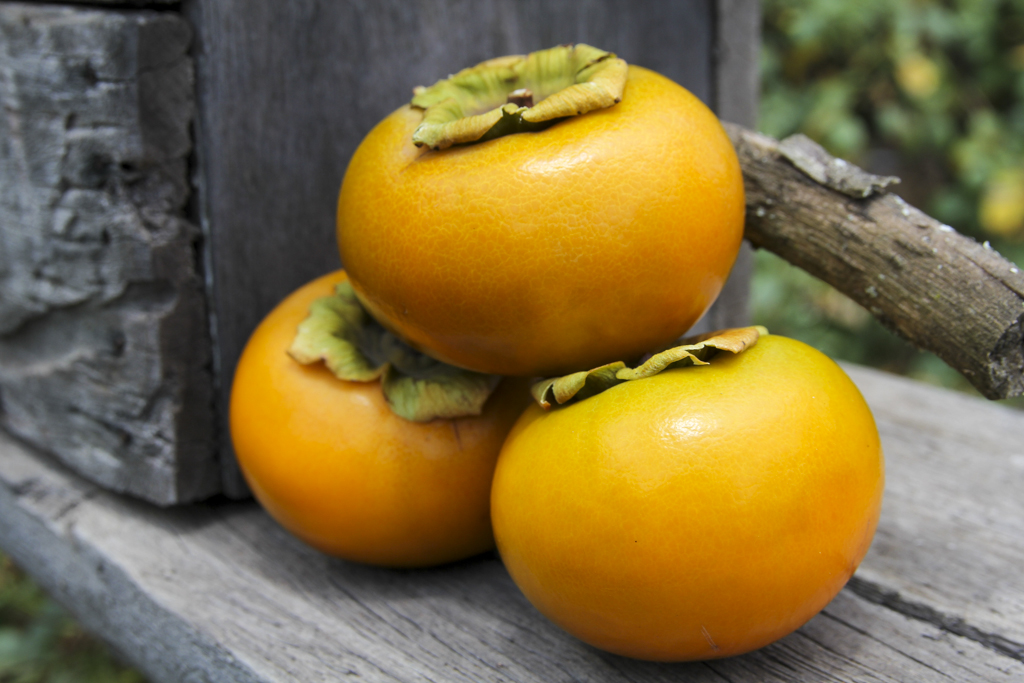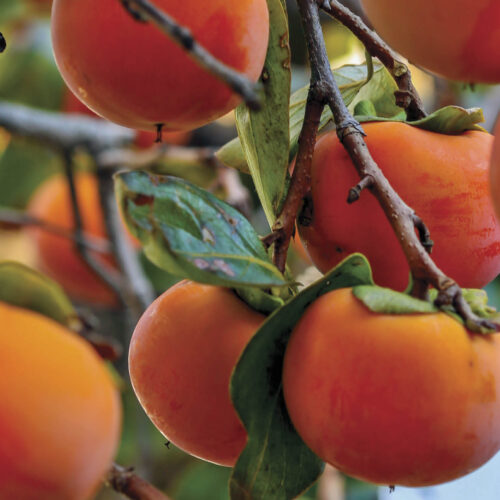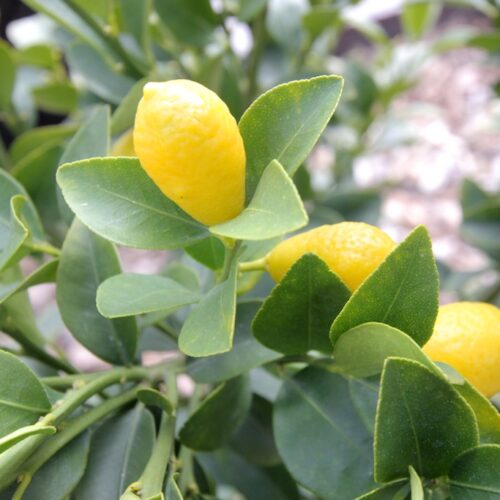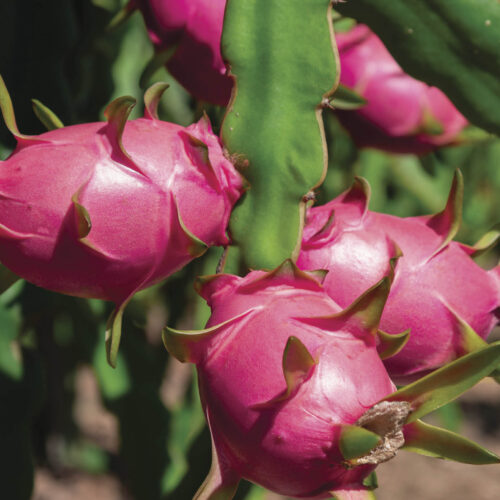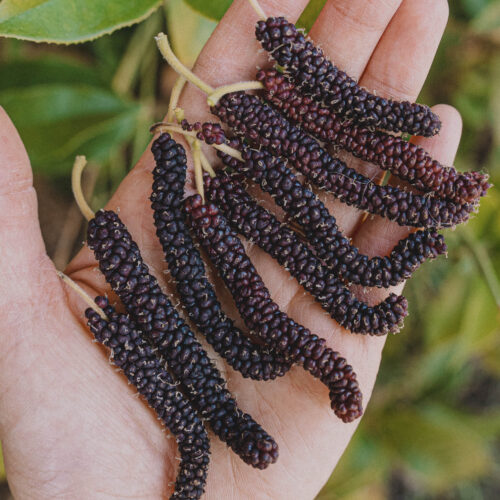Orange lanterns of autumn
2014-05-22T03:12:52+10:00
Few plants can bridge the ornamental-edible divide like the persimmon. JUSTIN RUSSELL explains how to grow them.
On the weekend I co-ordinated the Community Produce Stall at our local Hampton Festival. This annual event sees my little village of 400 or so residents swell to about 4,000 people, many of whom have a hankering for locally grown produce. It’s hardly a surprise then, that we sold 200 huge bunches of local rhubarb by 1pm. Or that organic caulis walked out the door. Or that we went through 10 boxes of stunning orange persimmons grown within 5km of the village.
The persimmon is an amazing plant. A relative of ebony, it forms a small tree between about four and 10 metres, depending on the variety, and in my views puts on the most spectacular display of autumn colour. Most persimmon varieties become a radiant orange red as the season progresses, but best of all, the late ripening varieties retain their fruit on the tree even after the leaves have fallen. It’s a magic sight to see little orange lanterns hanging from the gnarled branches of a persimmon tree as winter closes in. The only fruit trees that put on a comparable display are very late ripening apples.
When stacked up against more finicky fruit varieties, persimmons are reasonably straightforward to grow. They like a slightly alkaline soil and will grow in a broad climate swathe from Gympie in subtropical Queensland (or highland areas further north, such as the Atherton Tableland) to the cool temperate Huon Valley in southern Tasmania. One of their best attributes is that they colour beautifully in autumn no matter where they grow.
The only thing to be aware of when purchasing a persimmon for the first time is that their are two classes of fruit: Astringent and non-astringent. Bite into an astringent persimmon before it’s ripe, and you experience a horrible mouth puckering sensation that’s a bit like eating a a piece of dry cardboard. Let astringent types go soft and a bit mushy, however, and they’re an apricot-jam-like joy to eat. Some good astringents are ‘Nightingale’ (superb autumn colour, small tree) and ‘Dai Dai Maru’ (larger tree, quality fruit). Most will need a pollinating partner.
By contrast, non-astringent persimmons are usually self pollinating, small trees that produce fruit which is delicious to eat while firm and crunchy (or when allowed to go soft). ‘Fuyu’ is the most widely grown, but others to look out for are ‘Jiro’ and ‘Calabrian’.
Whichever variety you choose, persimmons bridge the ornamental-edible divide like few other plants can. They’re compact, highly ornamental, easy to grow and produce fruit with a bucket load of appeal. Get one in the ground this weekend!

